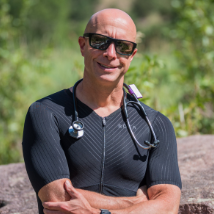Since the first article I wrote on the novel Coronavirus just under a week ago, there have been many new developments. I hope this additional information will help coaches guide their athletes through this ever-changing and fluid situation.
Where do things stand at this time?
The status of the outbreak around the world is dire. Although the number of infections and the number of deaths remains low, relative to the total population, the fact that we still don’t have a handle on how many are truly infected is very concerning. Because infected people shed the virus for days before they show symptoms, and because in many cases the virus only causes mild illness, not knowing who is infected allows for the virus to be transmitted rapidly to large numbers of people. As a result, the spread of the contagion has been growing exponentially. Since 10-20% of those infected become seriously ill, health care systems are becoming rapidly overwhelmed, leaving patients unable to get the care they need to survive. Additionally, mortality rates are shooting up and not just from COVID-19. In many cases people with easily treatable conditions are not receiving proper care, because hospitals are overwhelmed by COVID-19 cases.
How long is this likely to last?
At this point, it is still very hard to say for how long the outbreak will disrupt our lives. Because the United States and other western nations were so slow to react, and because the populations of those countries continue to resist necessary measures to contain the spread of the virus, it is difficult to see how this is going to be controlled anytime soon. In a best-case scenario, we hope that social distancing and self-quarantining are taken seriously and the health care system can handle this outbreak.
Another scenario has cases continuing to move through the population unchecked for months, stretching into well over a year. There is simply no way to predict right now.
How can athletes train without putting themselves at risk?
As mentioned in the first article, some modifications can mitigate the spread of this disease and protect individual athletes. As much as possible, athletes should train in their own home or outside by themselves—at most, accompanied by one or two other athletes. Social distancing is of the utmost importance. When training together, athletes should keep adequate space between them so as to avoid accidental infection by an asymptomatic training partner. Similarly, sharing water bottles or nutrition is strongly discouraged.
Swimming in chlorinated pools is actually a safe activity. Scientific studies previously demonstrated that chlorinated water effectively kills both normal and novel Coronaviruses. The problem, of course, is that most public and private pools are closed indefinitely. But if an athlete owns their own pool and even allows other athletes to swim in it, so long as it is properly chlorinated, swimming is safe.
Scientists have not yet studied swimming in saltwater pools. Open water swimming also has not been studied but is very unlikely to carry any risk so long as athletes maintain appropriate social distancing and hygiene.
Recent preliminary data suggests that the use of non-steroidal anti-inflammatory drugs (NSAIDs) may worsen the clinical course of patients infected with COVID-19. Currently, this data is neither definitive nor is it the final word on this issue, however, several bodies including the World Health Organization have issued related warnings. So, those with COVID-19 symptoms (cough, body aches, +/- sore throat, +/- fever) should use acetaminophen and NOT any of the NSAIDs for pain relief.
For those uninfected, NSAIDs do not predispose them to infection. NSAIDs also don’t increase the likelihood of serious infection, and therefore NSAIDs remain safe for the healthy (though with the caveats that I described in the previous article.)
What can athletes do to protect themselves?
Apart from social distancing and maintaining good hand hygiene, there is really very little that athletes can do to protect themselves from COVID-19 infection. Maintaining vigilance and awareness of those around them, so as to avoid people showing symptoms, is also a good idea. Unfortunately, there are many theories percolating on the internet and social media, several of which lack any veracity. Here are a few examples:
- There are no nutritional supplements or specific diets that boost immune function or promote immunity from viral infection of any kind.
- Regular training will not suppress the immune system and make you more likely to contract COVID-19. It is true that higher intensity, longer duration efforts MAY transiently suppress immune function but if the athlete maintains appropriate social distancing and hand hygiene then it does not matter.
- Being physically fit does not confer protection from either infection nor from serious illness if infected by a novel Coronavirus. Athletes must not assume that because they are in better shape they are somehow safe. While it is true that older people with pre-existing illnesses are more likely to get sick and die from COVID-19, being physically fit does NOT protect you from infection, prevent serious illness or help you avoid resulting death.
As the COVID-19 pandemic continues to evolve, I will provide additional information. If you have questions that you would like answered in later articles, please contact me directly via the website listed below. Train hard, Train healthy!
Sources
- Water Transmission and COVID-19. https://www.cdc.gov/coronavirus/2019-ncov/php/water.html. Accessed March 18, 2020.
- Day M. COVID-19: ibuprofen should not be used for managing symptoms, say doctors and scientists. BMJ. 2020;368:m1086. doi:10.1136/bmj.m1086


